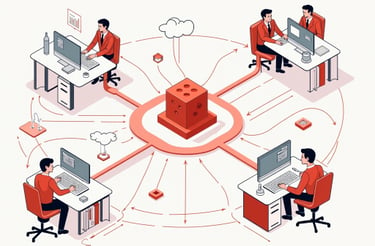Cyber Effects
Red team assessments use cyber effects to simulate real adversary tactics helping to evaluate an organization's security defenses and response capabilities.
4/2/20252 min read
Red team assessments have become increasingly sophisticated, employing various cyber effects to simulate real-world adversarial tactics. During the pre-scoping phase, specific effects are determined with the client. These effects are objective-based and can be integrated with adversarial threat tactics or used to supplement engagement objectives. These effects serve as powerful tools for evaluating an organization's security posture and response capabilities.
Use the Excel template in the Resources > Cyber Effects Spreadsheet section to enhance your understanding.
What Are Cyber Effects?
Cyber effects are deliberate actions taken during red team assessments to test an organization's cybersecurity defenses and incident response procedures. These effects fall into four main categories: Deceive, Degrade, Deny, and Disrupt.
Types of Cyber Effects
1. Deception Operations
Deception operations involve creating false scenarios or manipulating information to test an organization's ability to detect and respond to social engineering and misleading tactics. These can include:
Impersonating leadership through communication channels and injecting false messages
Manipulate documents or website content
Strategic placement of false credentials
Sophisticated phishing campaigns
2. Degradation Techniques
Degradation effects focus on reducing system performance and efficiency, testing an organization's ability to maintain operations under stressed conditions. Common approaches include:
Network latency introduction
Memory resource exhaustion
Controlled data corruption in non-critical systems
User experience disruption through visual or audio indicators
3. Denial Operations
Denial effects test an organization's resilience by temporarily removing access to critical services. These include:
Strategic system shutdowns
DNS manipulation
Denial-of-Service (DoS) scenarios
Communication channel disruption
4. Disruption Tactics
Disruption effects focus on creating controlled chaos to test incident response procedures. Common methods include:
Business email compromise simulations
Traffic injection and Man-in-the-Middle attacks
Strategic account lockouts
Session hijacking demonstrations
Why Use Cyber Effects?
Cyber effects serve multiple critical purposes in red team assessments:
Realistic Adversary Simulation: They provide authentic representations of actual threat actor techniques
Response Assessment: Organizations can evaluate their detection and response capabilities
Awareness Building: Teams gain practical experience handling various cyber threats
Gap Identification: Weaknesses in security controls and procedures become apparent
Best Practices for Implementation
When implementing cyber effects in red team assessments, consider the following guidelines:
Always maintain clear communication channels with assessment coordinators
Document potential risks and impact levels for each effect
Establish clear rules of engagement and safety mechanisms
Scale effects appropriately based on organizational maturity
Monitor for unintended consequences and be prepared to quickly reverse effects
Summary
Cyber effects are essential tools in modern red team assessments, providing valuable insights into an organization's security posture. When properly implemented, they create realistic scenarios that help organizations prepare for and defend against actual cyber threats. The key to success lies in careful planning, precise execution, and maintaining a balance between realistic simulation and operational safety.


